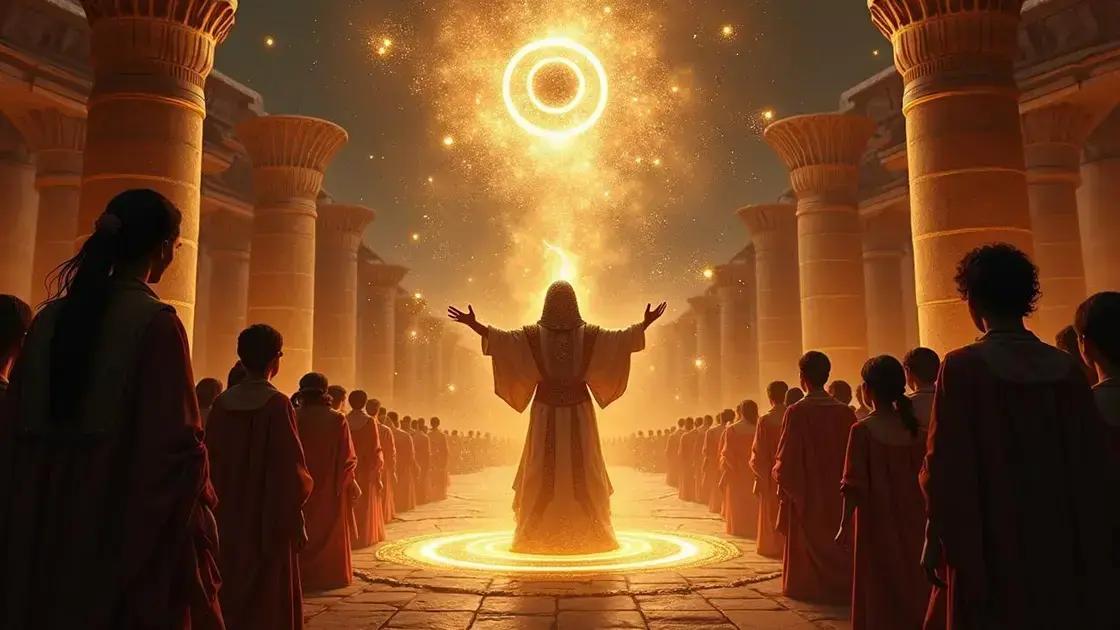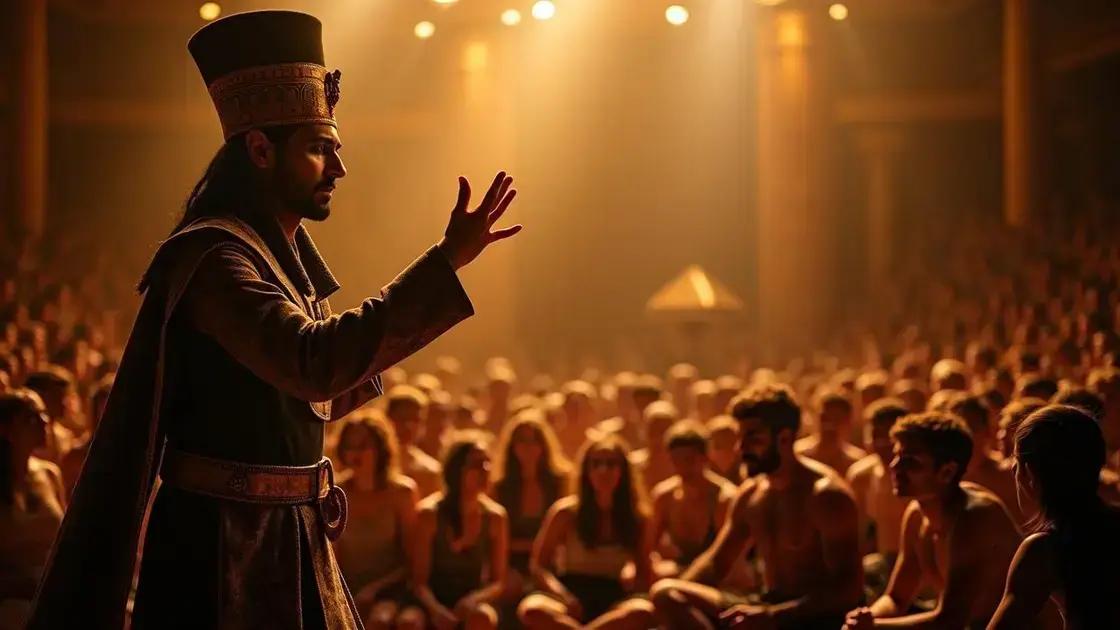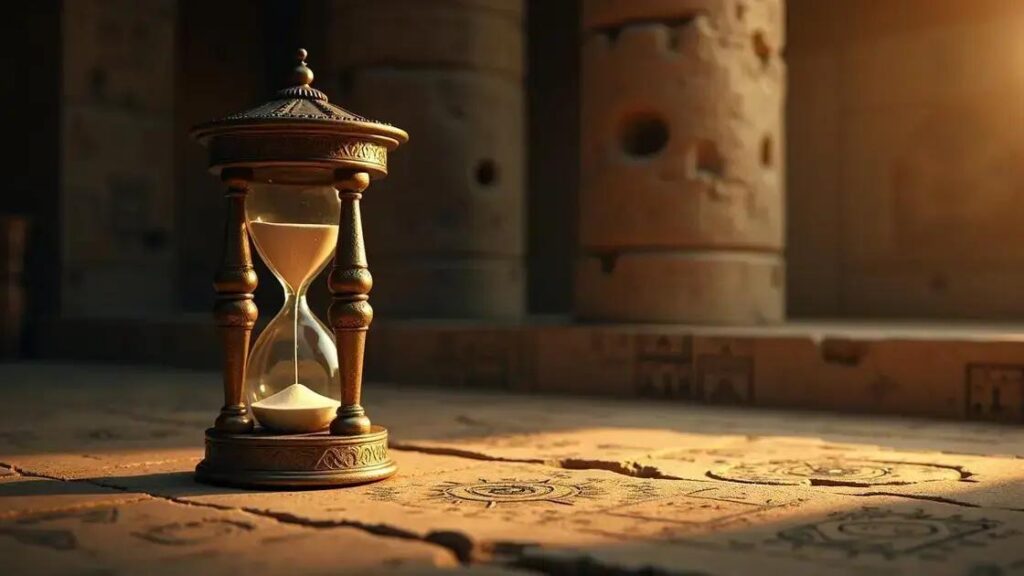The Trick of the Egyptians is an ancient illusion that captivates audiences through a blend of psychological manipulation, impressive techniques, and environmental factors. Its effectiveness hinges on audience engagement and mastery of timing, creating a unique performance that leaves viewers questioning reality.
Have you ever wondered, how long does it take for the Trick of the Egyptians to work? This ancient mystery has intrigued many, offering both allure and skepticism. In this article, we will dive into the fascinating world of the Egyptians’ trick and explore its effectiveness based on various factors. You’ll learn about the intricacies of the trick itself and what influences its success. Join us as we uncover the secrets behind this historical phenomenon and its timeframes.
Understanding the Trick of the Egyptians

The Trick of the Egyptians is believed to be a complex blend of illusions and psychological tactics. This ancient technique dazzled audiences during its time, captivating their attention and sparking curiosity. Understanding this trick involves recognizing its roots in ancient culture, as well as the methods used by performers to create a sense of wonder.
Historical Background
Egyptians were known for their fascinating rituals and magical displays. Their prowess in illusion was often linked to their deep understanding of human perception. By manipulating light and shadow, they could convince onlookers that what they were seeing was real, even if it was merely an optical illusion.
Techniques Used
To master the Trick of the Egyptians, performers would use various tools and techniques. These included mirrors, concealed compartments, and sleight of hand. The goal was to create a seamless experience that left audiences questioning their reality.
Moreover, timing played a crucial role. Illusions were often timed to coincide with specific moments, making the trick even more effective. This synchronization enhanced the overall experience, leaving spectators in awe.
The Psychology Behind the Trick
Understanding the psychology behind the trick is essential. Egyptian magicians knew how to play on the emotions of their audience. They often built suspense and created an atmosphere of anticipation. This psychological engagement made the eventual reveal of the trick even more dramatic.
Through storytelling and theatrical presentation, the Trick of the Egyptians became an unforgettable experience. The excitement and mystery surrounding their performances helped solidify their reputation as masters of illusion.
Factors Influencing the Effectiveness of the Trick

Several factors influence the effectiveness of the Trick of the Egyptians. Understanding these elements is key to grasping how the trick works and why it captivates audiences. Each component plays a unique role in enhancing the illusion and creating a memorable experience.
Audience Engagement
The level of audience engagement significantly impacts the trick’s effectiveness. When viewers are fully engaged and invested in the performance, they are more likely to be mesmerized by the illusion. A magician who captivates their audience can create a powerful atmosphere where disbelief is temporarily suspended.
Timing and Execution
Timing and execution are critical aspects of any great performance. Egyptian magicians timed their tricks to perfection, ensuring that viewers were caught off guard at just the right moment. A well-executed trick can create a sense of surprise that amplifies the overall effect.
Environmental Factors
The environment in which the trick is performed also plays a vital role. Factors such as lighting, sound, and the audience’s physical proximity to the performance can enhance or detract from the experience. Proper lighting can create dramatic shadows while sound effects can heighten suspense.
Mastery of Techniques
Magicians who have mastered their techniques can perform the trick with remarkable skill. Practice and experience allow for smoother movements and quicker responses, making the illusion more convincing. The mastery of tools and methods used in the trick is a fundamental aspect of its success.
Overall, these factors intertwine to create a powerful experience that leaves audiences questioning what they witnessed. Understanding these elements helps decode the magic behind the Trick of the Egyptians, providing insight into its lasting appeal.
Unraveling the Mystery of the Trick of the Egyptians
Understanding the Trick of the Egyptians involves a deep appreciation of the ancient techniques, audience engagement, and psychological manipulation that define its effectiveness. By exploring various factors such as timing, execution, and environmental influences, we gain valuable insights into why this trick remains compelling even today.
The mastery of illusion in Egyptian performances reveals a timeless fascination with magic that continues to inspire. As we reflect on the intricate details that contribute to the success of the trick, we can better appreciate the brilliance of those ancient magicians and the legacy they left behind.
Ultimately, the Trick of the Egyptians serves as a remarkable testament to human creativity and the enduring desire to be enchanted by the unknown.
FAQ – Frequently Asked Questions about the Trick of the Egyptians
What is the Trick of the Egyptians?
The Trick of the Egyptians is an ancient illusion often characterized by a blend of psychological manipulation and performance art.
How long does it take for the Trick of the Egyptians to work?
The effectiveness of the trick can vary, but proper execution with the right audience engagement can result in immediate impact.
What factors influence the success of the Trick?
Factors include audience engagement, timing of execution, environmental settings, and the magician’s mastery of techniques.
How do psychological elements enhance the Trick?
Psychological elements like suspense and emotional engagement help to captivate the audience and enhance the overall experience.
What techniques do Egyptian magicians use?
They use a mix of mirrors, sleight of hand, and intricate props to create visual illusions that deceive the audience.
Why is the Trick still relevant today?
Its relevance lies in the timeless fascination with magic and the enduring ability of illusion to capture human imagination.












